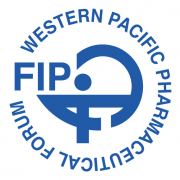PGA-Newsletter Vol.2, No.12,4 April,2012
A report in the Sydney Morning Herald today accuses some communitypharmacies of seeking to “impose” generic medicines on elderly patients.
The Pharmacy Guild would not support any pharmacist imposing genericmedicines on any patient – but having said that, the newspaper report provides no evidence that such a practice is occurring.
One in four Australians continue to take the original brands despite the extra charge that is sometimes involved. Owners and pharmacists on duty in each pharmacy are responsible for the
professional practice of the pharmacy. They are expected to follow theprofessional standards as set out under the Pharmaceutical Society of Australia (PSA) Professional Standards and thepharmacy standards as set out under the Quality Care Pharmacy Program (QCPP).
There are clear standards on generic substitution in both. Pharmacies generally stock more than one generic alternative, often for clinical reasons. For example, with the medicine Atenolol there are 10 brands of this medication.
The names vary and every hospital pharmacy and community pharmacy in Australia would carry three or four brand variants. They do not carry all 10brands and nor are they expected to.
It is important, therefore, for patients to understand the ingredient name
(for example, Atenolol).
The Guild, and others, are trying to increase patient awareness of ingredient names.Pharmacies do not carry just one brand for substitution on all items. Across allmedicines our members would carry a number of medicines depending onlocal patients because:
1 some doctors tick the ‘do not substitute’ box and that means thatthe specific brand they have written must be used;
2 some patients want to have the original brand even though there may be an extra charge (known as a brand premium); and
3 patients may have specific medical issues in relation to certain generics,for example some
patients are lactoseintolerant and therefore they can’t have a generic which contains a filler with a lactose base. Pharmacies use other systems to ensure patients are not confused. Patients are counselled regarding their medicines.
Additionally, there are cautionary and advisory labels that some pharmacies use.
These Cautionary Advisory Labels (CALs) have become a common part of Australian pharmacy practice. There are certain numbered CALs that are
mandatory for certain medicines. For generic medicine substitution there are two CALs which many pharmacies use to ensure there is no confusion.
There are also resource materials produced by the National PrescribingService (NPS) used by many pharmacies to assist patients. The resources are varied and are also available in over 10 languages. A generics awareness campaign was funded by the Federal Government to increase consumer awareness of the safety and effectiveness of generic medicines.
